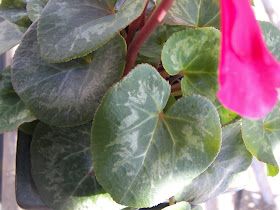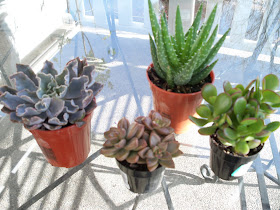
Pollarded tree at the Jardin du Luxembourg
During their recent trip to France my husband and my son took pictures of pollarded trees in the gardens of Paris. Although they think that they went there at the wrong time because the plants are still bare, I personally think that it is the best time to see the distinguished architectural beauty of pollarded trees. The appearance of newly polarded trees may exhibit an ignoble sight with their fresh cuts. Those that have gone through years of this drastic pruning method, however, display an unparalled presence of endurance and persistence through their stubby and gnarled formation.

Pollarded tree at the Jardin du Luxembourg
Pollarding is the method of pruning where the top tree branches and stems are cut back drastically. Pollarding starts with a maiden tree, a tree that has not been pollarded. A pollarded tree is called a pollard. Pollarding results in a flush growth of slender shoots and branches which needs to be removed annually. The annual attempt of the tree to grow a scar tissue over the repeated cut, results in the formation of bulges at the ends of the branches.

Pollarded trees at the Jardin du Plantes
Pollarding is very popular in France especially in urban gardens and parks (I noticed from the pictures). This procedure controls the growth of the plants beyond their space allowances. Pollarding reduces the canopy cover of trees which is important in maintaining the desired level of shade. It increases the resistance of the trees to winds. Root growth is regulated preventing them from being to invasive.

Rows of pollarded trees at the Jardin du Plantes
Rows of leafless tall pollards look stately in the spring. In the summer I imagine evenly clipped trees that provide a continuous row of shade. This are not common in California where we live...so I wonder how these tall trees are pruned and how much time, manpower, and Euros are spent in pruning them? I guess whatever the cost of maintaining them that they are worth it.























